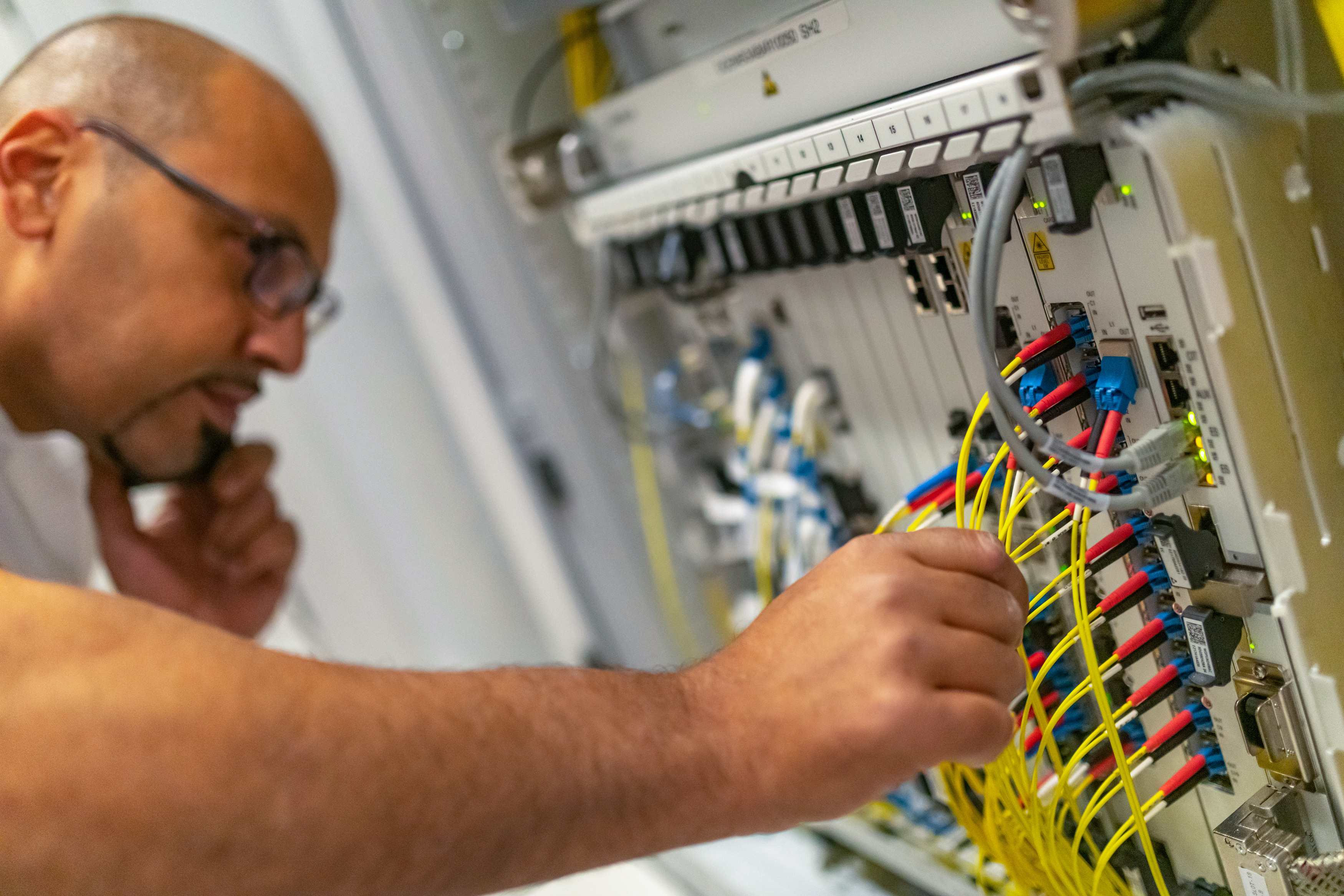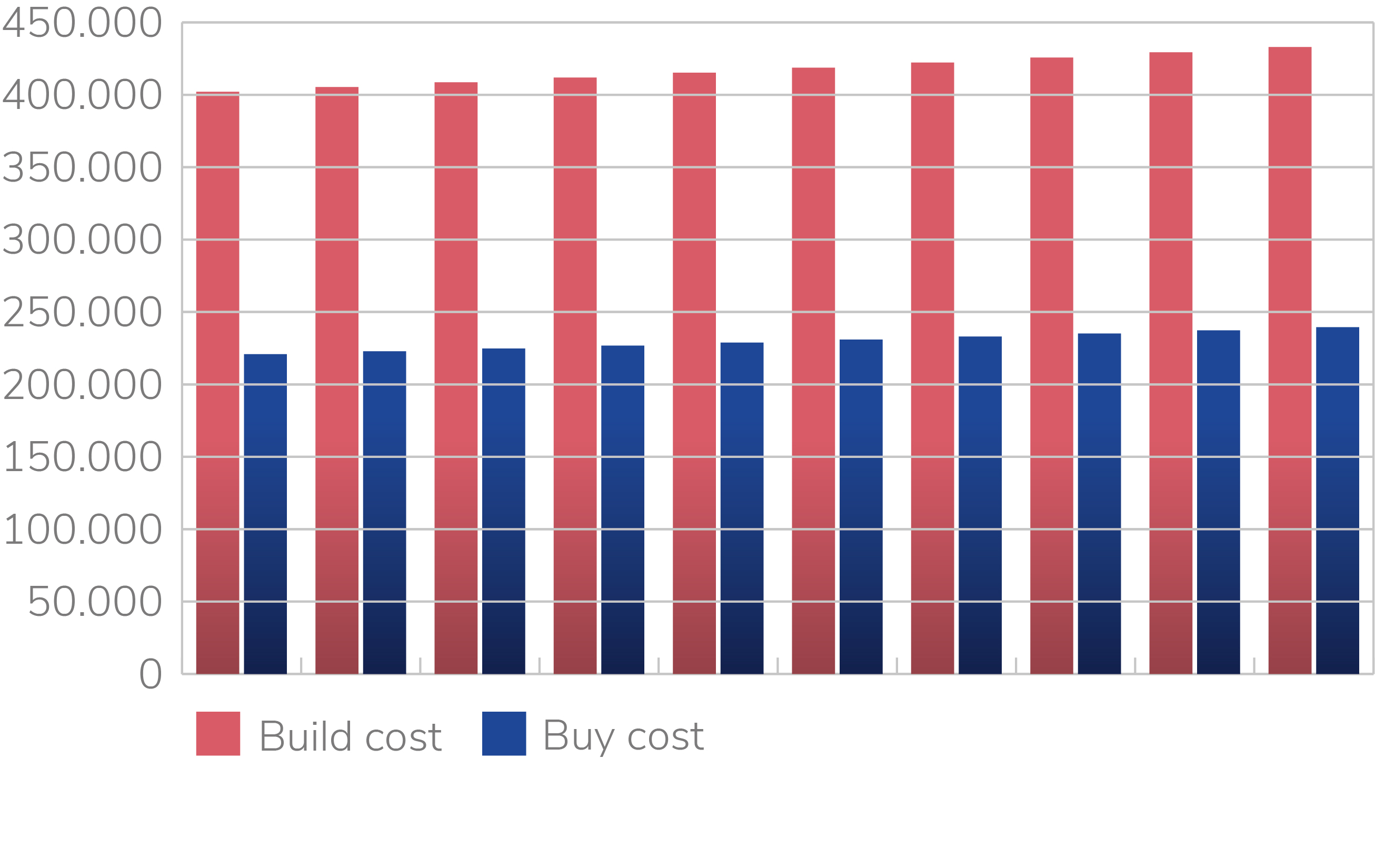The volume of data is growing at an exponential rate. According to the European Commission, data centers in the EU are responsible for 2.7% of the EU demand for electricity. If we continue with the current trend, that figure will have risen to a whopping 3.2% by 2030. This is why the Digital Strategy goal of the European Green Deal is to achieve climate-neutral, highly energy-efficient and sustainable data centers by that time. How will this affect your choice either to build or to buy a data center?
When deciding on whether to build or buy an IT infrastructure, the full financial picture is often crucial in the equation. But there are more factors to consider. An in-house data center, for instance, offers full control over all aspects of your IT infrastructure. At the same time, it also means your company has to continually progress to meet the challenges of providing enough space, power and cooling. As of 2020, we can add a new challenge to the list: the European Green Deal. This initiative will have major effects on the construction and maintenance of data centers and the necessary investments.
Lowering the PUE
As early as 2008, a group of stakeholders saw the need for a green transformation of the data center sector and created the European Code of Conduct for Energy Efficiency in Data Centers. This is a voluntary initiative that aims to reduce the impact of data centers on the environment, economy and energy supply. One of the ambitious standards it sets for companies willing to participate is that data centers should lower their Power Usage Efficiency (PUE). This number immediately shows how energy-efficient your data center is. You can calculate it by dividing your data center's total energy consumption by the energy usage of IT equipment like servers, stacks, and network equipment. The closer this number gets to one, the more efficient the set-up is.
Most small- and medium-sized enterprises (SMEs) have to settle for a PUE of three. This number is relatively high, considering that the European Code of Conduct for Energy Efficiency in Data Centers strives for the data center sector to reach a PUE of 1.3. The idea of data centers being bulk consumers of energy might be true, but these figures show it would eventually cost a lot more to power individual in-house servers. After all, the bigger the data center, the more efficiently it can run.

Cool down
The activity in data centers that takes up the largest chunk of energy is cooling. To ensure your data center operates flawlessly, you want to keep the temperatures inside cool and stable. At LCL, we do this by adding ‘cold corridors’ to our server rooms, a common practice in data centers worldwide. The innovative part is how we manage the temperature. We used to do this by extracting air from our server rooms as they heated up and injecting cooler air in its place. However, our research showed that it is much more efficient to keep a constant temperature inside the cold corridor. Implementing this new cooling solution has been a challenge, especially in a live environment, but this optimisation turned out to be a big energy saver. Add that to the improvement we made by modifying the speed of the fans in our cooling system outside the building ‒ so they do not have to work at full capacity all the time ‒ and we were able to cut the energy consumption of our data center by 65%! These alterations did not affect our customers in any way but do positively impact the environment.
Heading in the right direction
LCL’s efforts to reduce energy have been continuous and long-standing. We have been supporting the European Code of Conduct for Energy Efficiency in Data Centers from the outset. That is why we keep a detailed account of our energy usage, run on 100% green energy, continuously advance our cooling measures and improve the new data centers we build.
LCL was also the first data center in Belgium to get an ISO 14001 certification, the international standard for environmental management. These requirements are guidelines in finding the most environmentally friendly and energy-efficient solution for everything in your company: from the paper and cleaning supplies you use to the way you organise your waste streams, transport and cooling.
A long road ahead
Motivated by our intrinsic values, we have already made great steps in endorsing the European Code of Conduct for Energy Efficiency in Data Centers and carrying out the Digital Strategy goal of the EU Green Deal. By proactively responding to the coming transformation in this way, we hope to avoid mandatory rules and regulations imposed by the government. Because of our timely start and scale of business, we are confident we will manage and find solutions to meet the Digital Strategy goal for data centers to become climate-neutral by 2030 ‒ though we, too, still have a long way to go.
Are you at the beginning of this journey and choosing whether to build or buy your IT infrastructure? Having to satisfy the EU Green Deal requirements could potentially drain your time, energy, and money and take away the focus from your core business activities. Feel free to contact us if you wish to find out more about the financial and other implications of the EU Green Deal for your data center and the alternatives.
